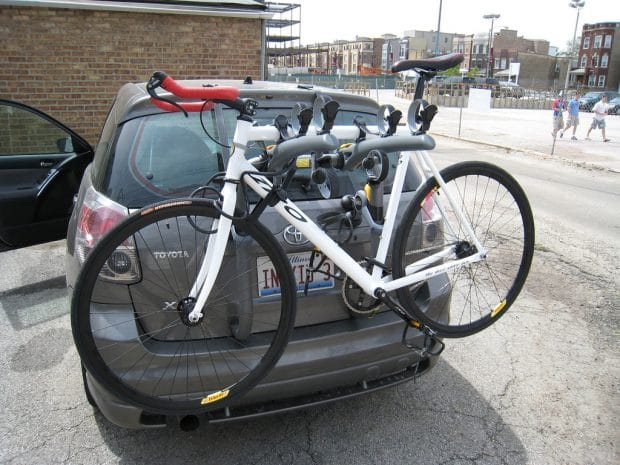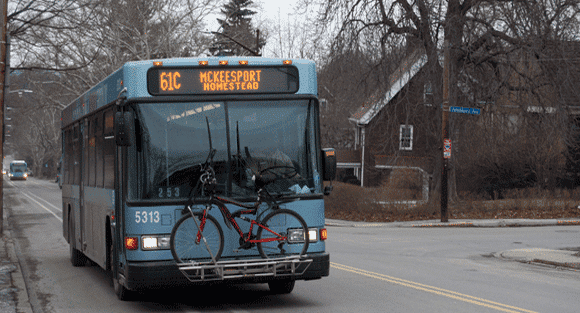
Trunk? Hitch? or Roof?
Tips for Choosing the Right Bike Rack
Not all of us can bike right out of our front doors and get where we need to go, especially when it comes to lack of access to safe streets to ride our bicycles on. Do what you can to fit in a ride–and if that means putting your bike on the car first, that is great!
Whether you’re looking to take your bike on a trip to a nearby or far away trail, or you want to try biking to work but need a connector, putting a bike rack on your car can immensely help you achieve this.
In honor of Bike to Work Day coming up on Friday May 19th, here is some helpful info on the three types of bike racks for cars. After you’ve learned a bit about them, visit your local bike shop to help you make the right purchase for you.
Trunk Rack

photo by Flickr user mattgalligan
Cons: Trunk racks use the top tube of the bicycle to mount on to the rack as displayed in the picture, so if you have a sloping top tube they can be trickier to use or require a bike frame adaptor.
Cost: $$-$$$
Hitch Rack

photo by Flickr user MPPope
Hitch racks come in two basic types–arms or cradles–and of those there are many varieties. Arms act similarly to the trunk rack and require a flat top tube or bike frame adaptor. Cradles hold your tires and allow for a wide variety of bicycle frames which can be especially great for mountain bikes, children’s bikes, or “women’s” bicycles.
Cons: You have to have a hitch installed on your car before you can get a hitch rack. The hitch itself could cost around $600. The rack will likely cost around $500. At about $1000 total, this investment will have a long lifetime. If you expect to get a different car anytime soon, however, you might want to stick with the more versatile trunk rack.
Cost: $$$-$$$$
Roof Rack

photo by Flickr user peteSwede
Bicycle trays for roof racks come in two styles: one that allows you to keep your wheels on which is especially great if you have fenders, and another style which requires you to take your front wheel off which some claim is more secure.
Cons: More upper body strength is required for this method. You have to have a roof rack installed on your car before you install the bicycle trays. Also, don’t even think about driving into a garage with this one!
Cost: $$$-$$$$
Don’t forget about the beloved bus

Cons: Buses travel to limited locations and might not service your neighborhood or your destination. The bus racks very rarely do not work with certain bike setups, especially if you have both a front and rear rack attached to your bicycle.
Cost: $ free with bus fare